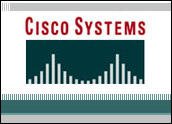
In the stampede of established players and relative startups seeking to capture a pieceof the rapidly expanding cloud market, it is inevitable there will be a few casualties.However, it is surprising which companies have failed to gain an edge in this “Cloud Rush”environment.
A case in point is Cisco Systems, which can’t seem to find its way in this brave new worldof the cloud — ironic, given the cloud wouldn’t exist without robust networks.
The cloud is being driven to a large degree by “prosumers” seeking more powerfulmobile devices to connect to more user-friendly applications and collaboration tools.Since the “consumerization of IT” and cloud services depend on connectivity, you wouldthink Cisco would be raking in the cash as everyone scampers to become more connectedand we all are more dependent on networked devices.
Mea Culpa
Cisco recognized how networks were becoming more essential in the home well beforethe consumerization trend became clear to others, and it bought Linksys in anticipationof this trend. It also bought WebEx to encourage greater collaboration among remoteworkers. Cisco even acquired the maker of the Flip videocam to fuel greaterdemand for bigger “pipes” to accommodate a surge in video via the Web.
While Cisco can’t be blamed for not anticipating that smartphones would completelyoutpace dedicated videocams and undercut its Flip acquisition, the company alsofailed to fully leverage its WebEx acquisition.
Rather than build a potent ecosystem ofcomplementary Software as a Service solutions to enhance the value of WebEx,it concentrated on using WebEx to sell businesses on Cisco’s more powerful andexpensive telepresence technology instead.
Cisco also recently made a serious PR blunder by trying to force some of its Linksyscustomers to opt in to its Cisco Connect Cloud service — and then claimed the right to trackthe users’ Internet history via the service. That convoluted scheme generated a sea ofnegative press and forced the VP/GM of Cisco Home Networking to publish a blog postapologizing for the gaffe and clarifying the company’s intentions.
Lost Its Way
The most incredible aspect of the Cisco cloud saga is how the company failed tocapitalize on the escalating demand for greater connectivity at the corporate and serviceprovider levels with its core networking technologies.
Despite explosive demand, the company has only grown revenues 7 percent, and profits areonly growing as a result of austerity efforts rather than innovative new service deliverymethods. Cisco has warned its investors that they should expect the company to generate only modest revenue growth for the foreseeable future.
It is a sad story, especially because few CEOs are as good at evangelizing about thefuture of business as Cisco’s John Chambers. Yet, Chambers hasn’t been able to converthis vision into effective execution within his organization.
While it has many of the piece-parts to provide a powerful portfolio of cloud solutions toits customers and channel partners, Cisco has lost the corporate focus to pull these piecestogether successfully in a fundamentally changing marketplace.



















































Social Media
See all Social Media